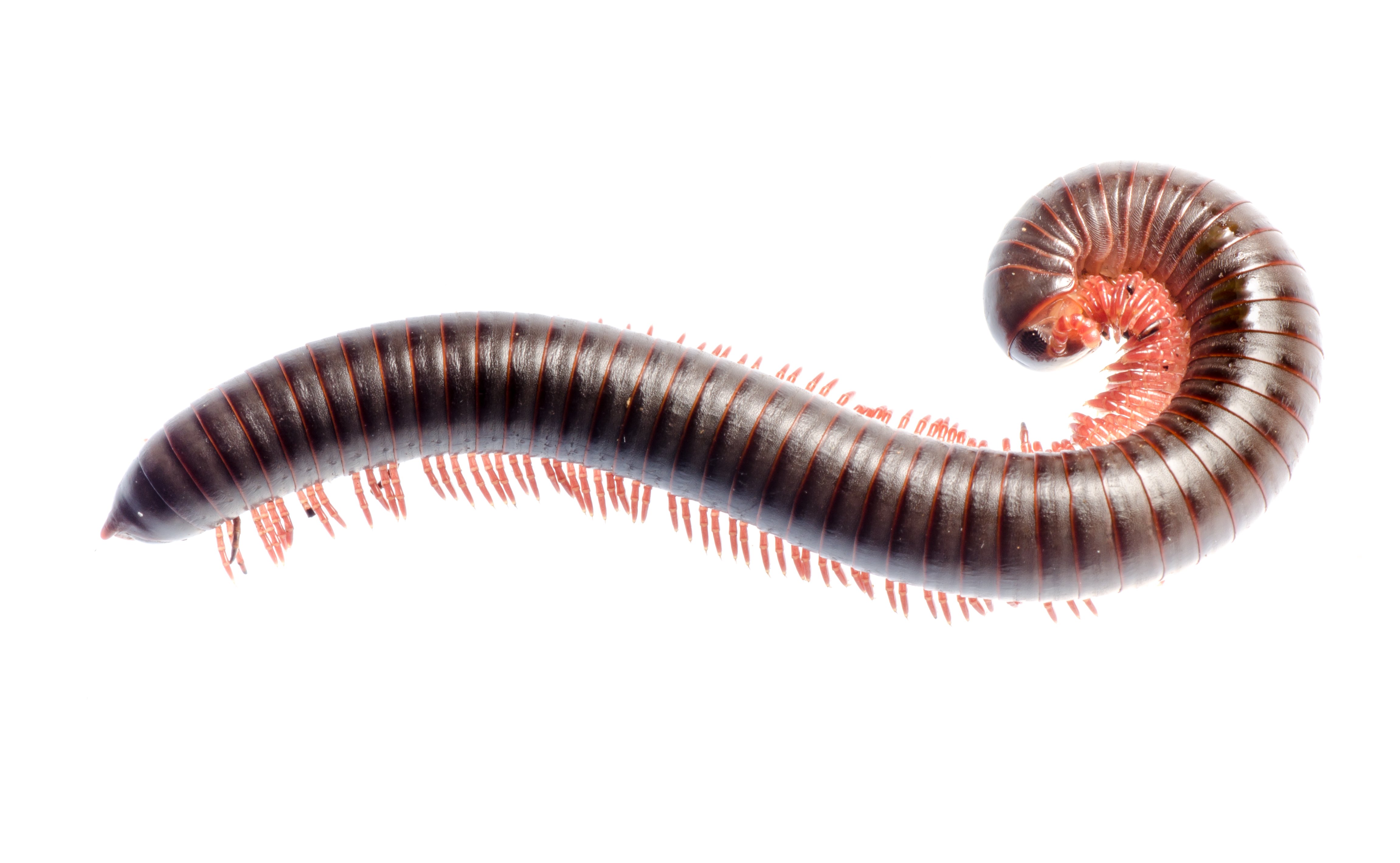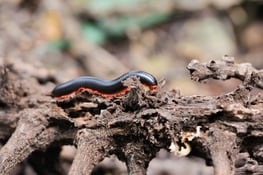
Millipedes
Millipedes, like centipedes, are arthropods of the Myriapoda subphylum, but part of a class known as Diplopoda. Most millipedes have very long cylindrical or flattened bodies with more than 20 segments. Each segment has two pairs of jointed legs that allow them to move slowly but smoothly across surfaces. Although the millipede’s name suggests it has 1,000 feet, no species was known to actually have this many legs until the discovery of the Eumillipes persephone, which can actually have up to 1,300 feet!
Schedule a FREE Estimate
Millipede biology and behavior
The vast majority of millipedes eat decaying leaves and other plant matter (detritivores). Some may drink fluids within plants or feast on fungi, and a very small minority of millipedes are predatory. Millipedes are harmless to humans physically, but they can pose a threat to our gardens and crops. Especially in greenhouse environments, millipedes are known to cause significant damage to emergent seedlings and other fragile plant growth.
Millipedes are considered to be some of the oldest known land animals - some of their prehistoric ancestors grew to be over 6 feet long! Today, the largest millipede species max out at around 15 inches, but most commonly encountered millipedes are much, much smaller. Most millipedes are black, brown, or reddish in color, and one species native to California actually glows in the dark. Like centipedes, millipedes live in a variety of diverse environments and live in every US state, including Alaska and Hawaii.

Millipede or Centipede - What's the difference?
A major difference that most homeowners seek clarity on is the danger of centipedes and millipedes - centipedes are venomous and known to deliver some seriously painful bites, while millipedes do not typically bite or sting and are not venomous. Centipedes will bite when they perceive a threat, whereas millipedes will curl up into a tight ball when in danger. If you were to touch a millipede or try to pick it up, it would likely curl up in a spiral and essentially play “dead.” The same cannot be said for a centipede, who may bite or “sting” you with its many pointed legs if disturbed.
Visually, it may be difficult to differentiate the two long, segmented insects. There are a few ways to tell them apart, however. Millipedes tend to be longer, smoother, and have considerably more legs than a centipede. When observing from the side, millipedes will appear more rounded and cylindrical in shape, whereas a centipede will look flatter. These differences in characteristics separate the two similar insects by class - centipedes belonging to the class of Chilopoda, and millipedes belonging to the class of Diplopoda.
Another difference is in their speed. Centipedes are known for their ability to move surprisingly fast, zipping across surfaces quickly. Millipedes, on the other hand, tend to move far more slowly. In comparison, millipedes move at a meandering pace, seemingly in no hurry. Millipedes also burrow, while centipedes do not.
These insects also differ greatly in diet. Centipedes, as mentioned previously, are carnivorous predators that “hunt” and kill prey. They do this by injecting their prey with venom found in their forcipules, or pinchers. Millipedes are primarily detritivores, feeding on decaying organic matter or roots of seedlings. Millipedes are ecologically significant as facilitators of microbial decomposition and aiding in soil nutrient cycles and turnover.

Are millipedes household pests?
Millipedes aren't commonly encountered in the home as they prefer very moist and wet environments. They will occasionally make their way indoors if their outdoor environment becomes too hot and dry, or conversely, if their environment becomes too saturated in the event of very heavy rain or flooding. If these environmental factors aren't in play, chances are the millipede just wandered in by mistake! Millipedes generally do not survive long indoors, unless they find a suitably damp and dark environment. Most millipedes who find themselves indoors will die within days or mere hours due to lack of moisture.

What should I do if i find a millipede in my home?
Millipedes aren't known to cause damage to your home or belongings and are generally considered docile or nonthreatening insects. If you happen across one in your home, it's not necessarily cause for immediate concern. Your home is not an ideal environment for a millipede and they likely don't want to be there anymore than you want them there. Because they can't survive long periods indoors, you may want relocate a misplaced millipede back outdoors to help their chances of survival. If you're uncomfortable handling a millipede, you may prefer to wait until the millipede passes due to lack of moisture and simply vacuum it up.
While infestations of millipedes are exceedingly rare, should you encounter an issue with millipedes in your home, don't hesitate to reach out to EcoShield Pest Solutions for timely service. EcoShield offers pest solutions for insects that many other pest control companies don’t provide services for and millipedes are covered under the Shield Home Protection Plan. Contact EcoShield for all of your pest problems!
Frequently Asked Questions
Centipedes. Millipedes. What’s the difference? And why should I care? While the centipede and millipede look quite similar (and are often confused for one another) they are far from the same insect. Among the visual characteristics and differences, centipedes and millipedes also differ in their behavior and threat to humans. As a homeowner, it is... Read More